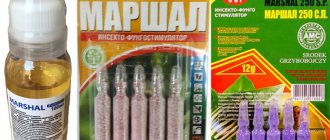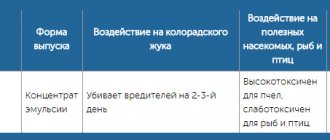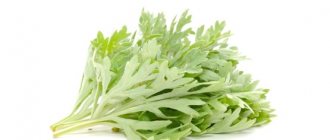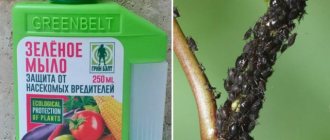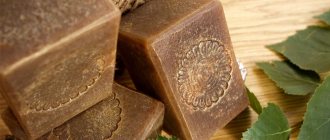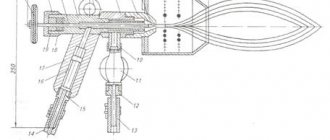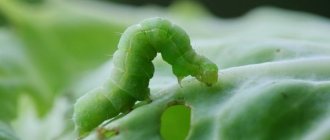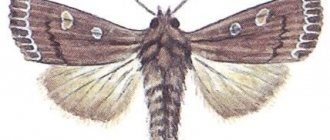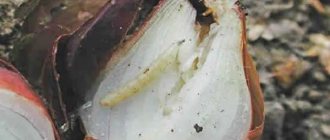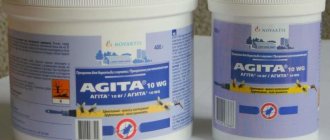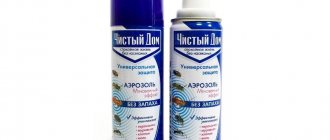The alkaloid nicotine, which is found in large quantities in tobacco leaves and stems, is a poison for many insects, working within plants as their natural protector against pests. And gardeners have known this for a long time.
Back in the 17th century, nicotine extracted from tobacco was already used as an insecticide, and a century later, plants affected by insects began to be treated with tobacco smoke. Why don't you try using this cheap and effective remedy to combat garden and vegetable pests?
Moreover, tobacco is not only an effective insecticide, but also a real fertilizer - in addition to alkaloids, it contains many useful organic and mineral substances that can enrich the soil.
How to properly use tobacco in the garden? There are several methods.
What is tobacco infusion used for?
Tobacco is often used as a natural supplement. To make an infusion for this purpose, tobacco dust is used. As a rule, it remains after tobacco production as waste. It can be found on store shelves in gardening departments. Tobacco waste contains phosphorus, potassium and nitrogen. They are so necessary for plants for intensive growth.
Studies have shown that tobacco-based products do not contain hazardous substances and alkaloids that can harm the fruit.
The infusion is non-toxic, has a positive effect on microorganisms in the soil and nourishes the plant with minerals. Thanks to this, the yield increases significantly. This infusion can also be used to fertilize indoor plants. It is especially effective during transplantation for better adaptation.
An infusion of tobacco will also help against pests and parasites: aphids, caterpillars, leaf rollers and others. The product is non-toxic, does not penetrate deep into the plant and does not pollute the soil, unlike chemical insecticides.
Application of the product
Tobacco dust is industrial waste from relevant factories, having the appearance of dust and the color corresponding to the raw material. In addition to tobacco, its composition also includes: nitrogen (up to 5%), potassium (up to 3%), phosphorus (up to 2%).
Bait is sold in any specialized store, you can learn about its use from this article, and it is very simple to treat an area with it against a pest or to feed plantings. Storage conditions are simple: keep the dry mass covered.
Tobacco dust is industrial waste from relevant factories
To understand why this supplement is needed, you need to know only two things:
To understand what makes it special, you should know:
From pests
Tobacco infusion against pests is quite effective. To prepare the preparation, stems, dust and leaves are used. The main active ingredient is alkaloids. It will help get rid of such parasites as: aphids, copperheads, thrips, leaf roller caterpillars, cabbage moths, apple and fruit moths, onion flies, secretive moths, lacewings, moths, ringed silkworms, cruciferous flea beetles, spider mites, rapeseed and cherry sawfly larvae, whiteflies, slugs and even household moths.
Compound
- tobacco – 400 g;
- water – 10 l.
Preparation
- Grind the raw materials.
- To fill with water.
- Leave for 2 days.
- Squeeze out the liquid and strain through cheesecloth.
- Dilute with the same volume of water.
Used for pest-infected plants by spraying.
Spraying recommendations
For spraying with tobacco infusion to work, it is worth considering the following recommendations:
- before processing, liquid soap is added to the infusion at the rate of 40 g per 10 liters of water, which helps to better fix the product on the crops;
- try to spray the infusion when spraying along the tops of trees and bushes, because it is in this place that there is a high concentration of aphids;
- It is normal for plant leaves to change after treatment - a brown tint will be added due to the high concentration of the infusion.
Bird cherry decoction
What it fights: aphids, leaf-eating caterpillars, slugs.
How to prepare: 200 g of crushed mass of flowers and young shoots of bird cherry are boiled in 5 liters of water for 15 minutes, allowed to brew for about a day. After this, the plants are filtered and sprayed - this can be done throughout the entire growing season.
From aphids
Despite the large assortment of home and store-bought remedies for parasites, tobacco infusions for aphids occupy one of the leading positions.
Compound
- tobacco dust – 400 g;
- water - 10 l;
- soap – 40 g.
Preparation
- Pour water over tobacco dust.
- Leave for a day.
- Stir several times.
- Strain through double cheesecloth.
- Add soap.
Gardeners advise spraying against aphids every 5-7 days to remove all pests. To improve and accelerate effectiveness, you can alternate preparations from different types of raw materials.
Consumer Reviews
Most people who have tried this method of fighting aphids respond positively. Although there are some nuances that should also be taken into account when choosing tobacco dust to kill the pest.
I was very upset when I saw numerous holes in my crop. Aphids have affected literally everything: tomatoes, cabbage, fruit trees. I did not carry out any prevention, and in general I had never encountered such a problem before. When I started looking at the beds in more detail, I was simply horrified. How many aphids are there? The first thing I remembered was that my grandmother always used an infusion of tobacco against aphids. How disappointed I was when the next day after treatment all the insects remained in place. But the next day there were significantly fewer of them, and on the third there were practically none left. After 5 days, I repeated the course of spraying and decided to wait. The result pleased me.
I have never used tobacco to kill aphids. I use this remedy as a preventive measure. I am always satisfied with the result and have not yet encountered an invasion of a small pest. I think my remedy is working.
I tried many different folk remedies against aphids. But tobacco has proven to be the most optimal so far. To enhance it, I always add a small amount of soap solution. I usually evaluate the results after 4 days. There have been no misses yet.
Angelina Yurievna, Krasnodar region
Thus, the use of tobacco against aphids is suitable only for those summer residents who value safety and know how to wait. For a faster effect, effective chemicals should be used.
In gardening, tobacco infusion for spraying has long become an alternative to commercial toxic drugs for controlling parasites and fertilizing garden crops.
Tobacco dust
From waste in the production of tobacco factories, packaged packets of tobacco dust are produced for sale. Thanks to the rich content, plants receive improved nutrition and soil activity increases. In addition to the fact that tobacco dust is used when digging the soil and planting crops by adding it to the ground, a common method of application is an infusion of tobacco dust.
Tobacco dust contains nicotine, which fights parasites during the growth of garden plants. An infusion of tobacco dust is useful for protecting tobacco, cabbage, fruits and berries and flowers.
Compound
- tobacco dust – 400 g;
- a bucket of water.
Preparation
- Fill the main component with water.
- Leave for at least a day.
- Stir occasionally.
- Strain through cheesecloth.
- Dilute with water 1:2.
- Add a little soap.
Apply immediately after preparation. Spray at least 2 times a day. Take a break for several days between procedures.
An infusion of tobacco dust works effectively against pests when used correctly:
- to combat copperhead, spray fruit trees during the period when buds appear;
- when removing aphids, treat with infusion by spraying at intervals of a week;
- to combat gooseberry moth and raspberry beetle larvae, carry out treatment during bud break;
- when spider mites appear, spraying is carried out immediately after identifying the pests, and again after 7 days;
- from fleas - all crops are treated once a month;
- for cabbage flies and onion hoverflies, treatment is carried out 2 times: in the first half of June and at the end of August.
Treatment of plants with tobacco
It is no secret that every summer resident, resident of a rural area, when planting seedlings, shrubs or fruit trees, hopes to receive a bountiful harvest that will be the envy of their neighbors.
You will be lucky if, without putting in any work, you get an abundance of vegetables, fruits and flowers. Unfortunately, we cannot always trust chance and hope for the mercy of nature. A huge number of external factors can have a detrimental effect on your plantings, leaving at the end of the season instead of baskets full of fruits, disappointment and wilted bushes.
So who caused such irreparable damage to your country estate? The answer is simple - diseases and pests. There is no need to be upset, now on sale you can find a huge number of pesticides and chemicals that will literally destroy all parasites at the root, in the literal sense of the word. It would seem that everything is simple, but there is one small, but very big BUT...
Precautionary measures
Despite the fact that tobacco infusion against pests is non-toxic, it is worth adhering to some safety measures. Since careless use can cause health problems, you must:
- wear a cotton-gauze bandage to protect the respiratory tract;
- rubber gloves are used to protect the skin of the hands;
- eye protection glasses;
- If the drug gets on the skin and mucous membranes of the eyes or mouth, rinse thoroughly under running water.
- while carrying out work to get rid of pests, you must not smoke, drink or eat food;
- at the end of the procedure, wash your hands and face well with soap;
- Children, pregnant and lactating women, as well as people with allergies are not allowed to work with the infusion;
- preparations of dried raw materials for the drug must be done with gloves and scissors;
- store the prepared raw materials with signed labels, because not only fresh tobacco is used to make the infusion, but also dried tobacco;
- The dishes used for making the infusion must be washed with a solution of soda ash or wood ash, and then rinsed with plain water.
Thanks to tobacco infusion, you can get rid of almost any harmful insect for home crops. It is important that this method is not only effective, but also economical.
What are the advantages of the method
Many farmers like to use tobacco against aphids. After all, this is a very affordable and effective remedy. The question often arises, where to get the main component for killing aphids. In this case, experts offer several options:
- Grow your own plant in the garden beds. People living in warm regions of the country will be able to do this, since the culture is moderately thermophilic. Another disadvantage is the waiting time; to harvest tobacco leaves, you will have to wait more than one month, but you need to act quickly. A plus is that tobacco growing in the beds will itself repel harmful insects and then you won’t have to fight them.
- Buy a pack of cigarettes. The cheapest batch of cigarettes without a filter is suitable for this. Inexpensive and completely doable. And you don't even have to wait for anything.
- Tobacco dust. The most convenient option for releasing a product for summer residents. It is sold in specialized stores in the form of a fine powder and all you need to do is dilute the powder in water.
The use of tobacco in the fight against aphids is not only safe for humans and others, but also very beneficial for plants. This product is also used to fertilize the soil to saturate it with nitrogen, potassium and phosphorus. Also, the use of tobacco allows you to slightly increase the yield.
Let's look at how to prepare tobacco infusion against aphids and how to use it.
Horsetail decoction
What it fights: powdery mildew, rot, rust.
How to prepare: 50 g of dry horsetail, pour 1 liter of water and leave for 2-3 hours. Then the container with the infusion is placed on the fire and boiled for about 20 minutes. The broth is cooled, and before spraying the plants, it is filtered and diluted with water (1:5).
Tansy decoction
Who it fights: Weevil.
How to prepare: 300 g of dried or 1 kg of fresh plants, pour 5 liters of water and leave for 1.5 days. Then boil for 30 minutes, filter and add cold water to get 10 liters of the composition. Also add 50 g of laundry soap for better adhesion to the leaves.
Description of the insect
Aphids reach only 2-3 mm in length. She spends the winter in the egg phase on branches and shoots of bushes at the very base of the buds.
When the buds swell, the founding larvae emerge from the eggs and begin to harm the plant. Then, when the buds open, they proceed to damage the leaves and shoots of the tree.
| Note. Aphids cause the greatest damage to young shrubs. |
The insect reproduces quickly. Female larvae develop for about 2 weeks, after which they give birth to new individuals without fertilization. Immediately after birth, the pest begins to cause damage to garden crops.
In summer, aphids can produce up to 15 generations, covering the shoots and foliage of trees with a thick layer of larvae and founding females. Winged females also emerge from the eggs. Their goal is to populate as many new areas as possible.
The life cycle of insects comes to an end in late autumn, after the onset of the first frost. Before the onset of cold weather, they lay eggs, which will spend the next winter on the shoots and leaves of trees.
